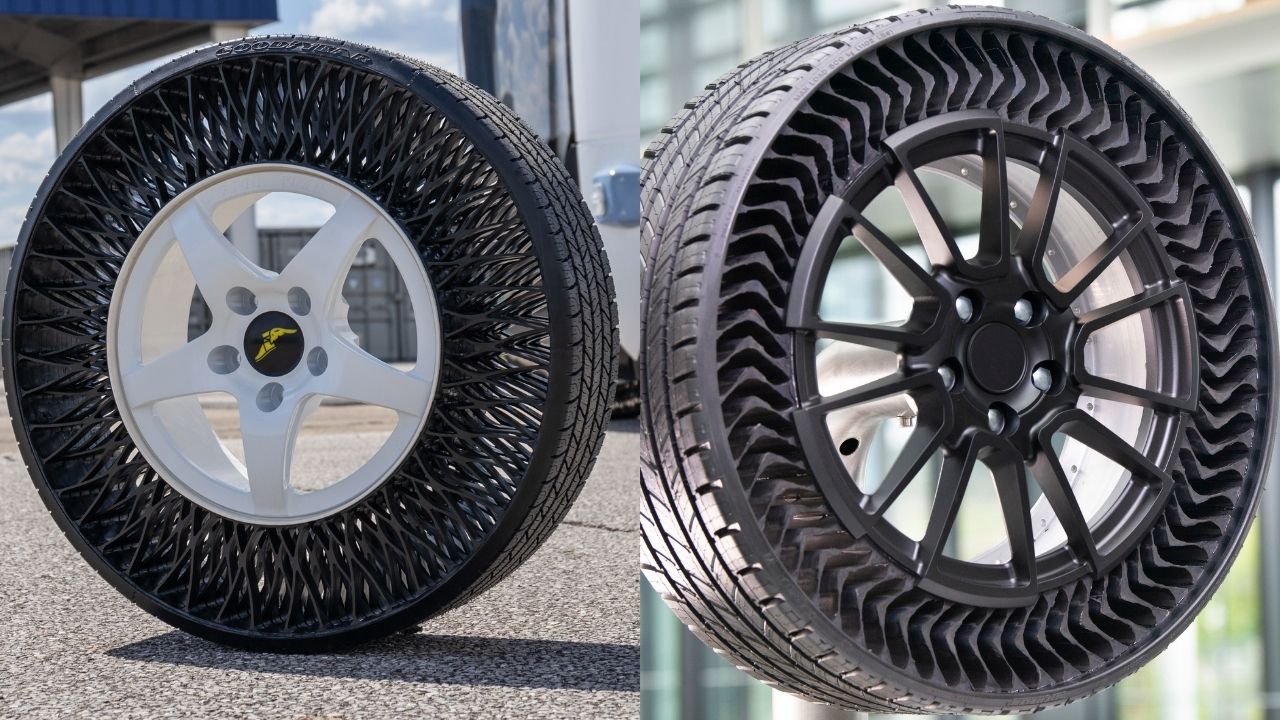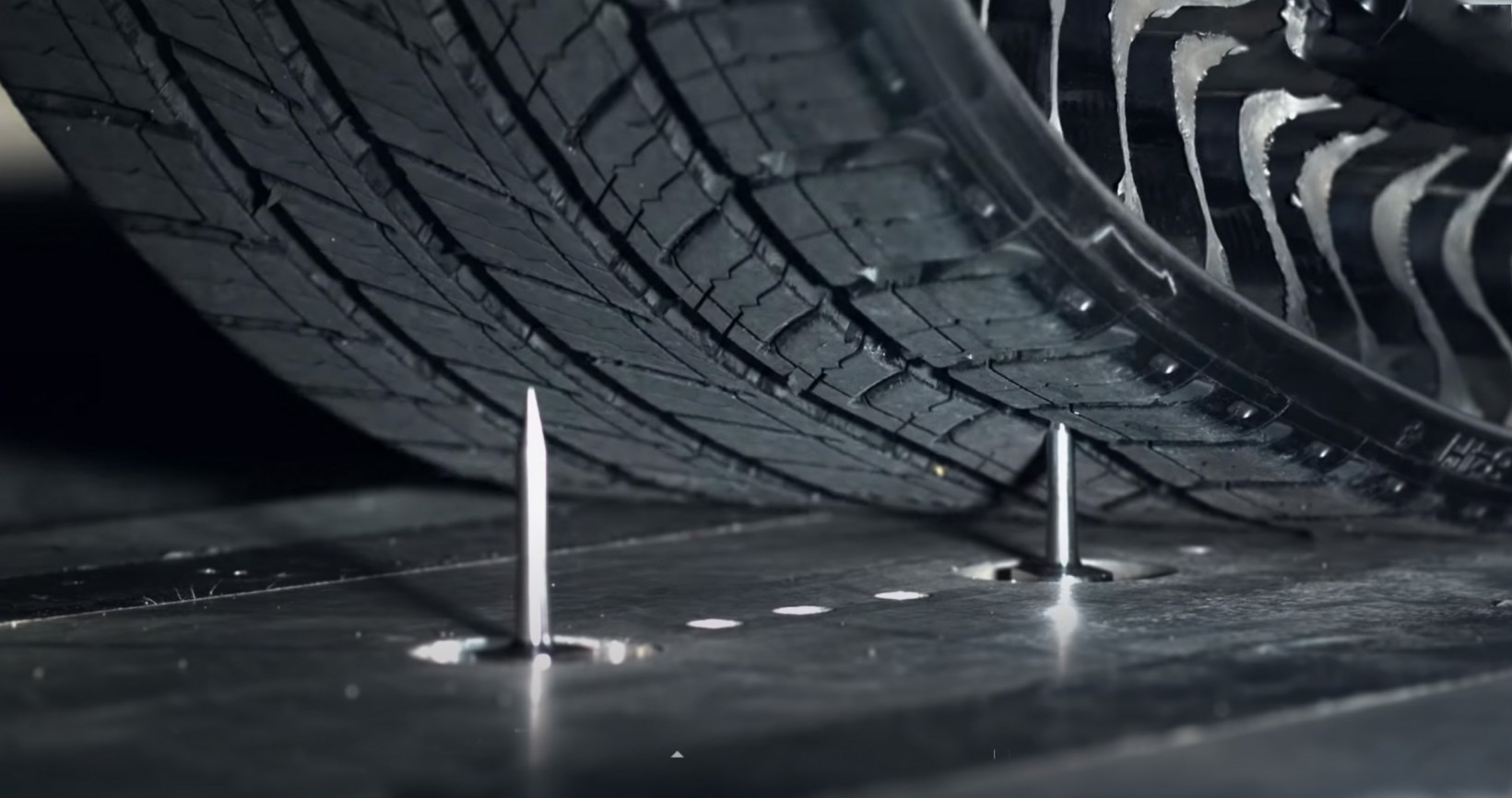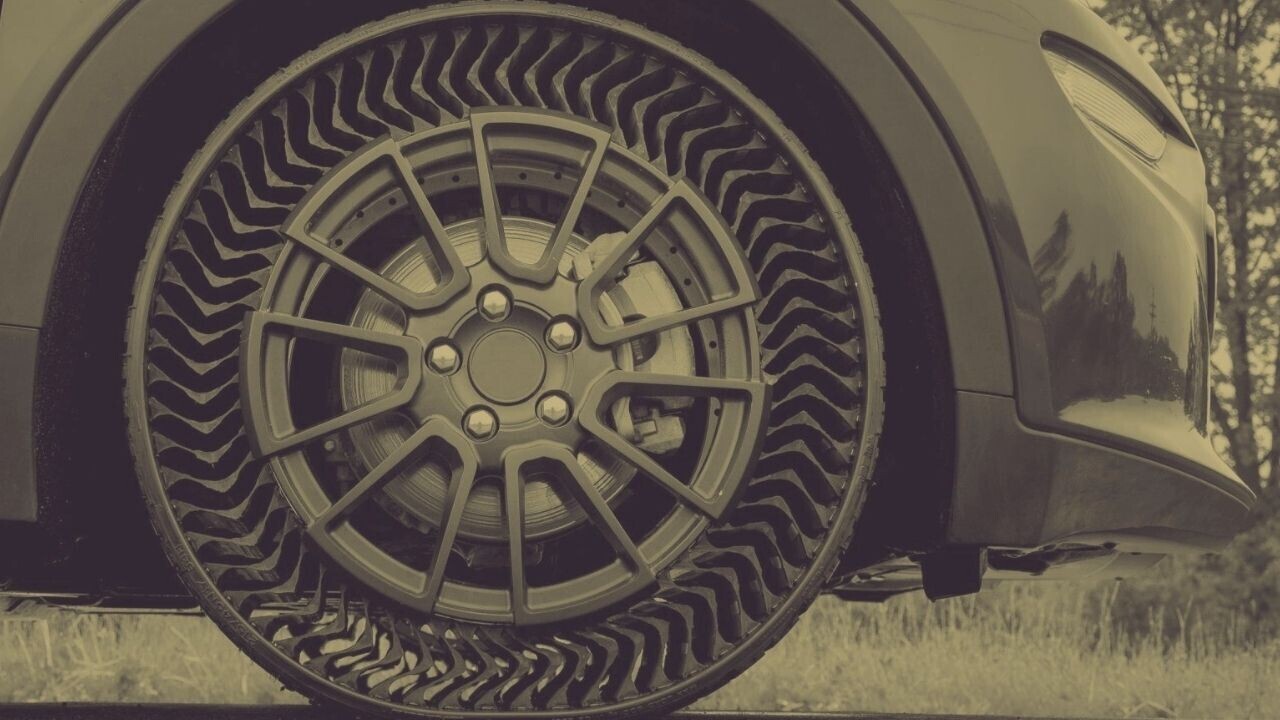Wouldn’t it be great if you never had to worry about a flat tire? You could drive anywhere, roaming the globe, traveling to remote locations without a worry.
Well, stop dreaming. They exist. And they’re called airless tires. It’s a simple solution: if there’s no air in the tires, they can’t pop.
Amazing, right?
Well, you’ll need to curb your enthusiasm a little. While airless tires exist, they’re not the silver bullet we hoped for — at least for now.
Not a novel idea
First off, airless tires — also called non-pneumatic tires (NPTs) — have been around for a while.
You can find them in lawn mowers, golf carts, military vehicles, and even bicycles.
So why are we talking about them now?
Well, because tire manufacturing giants such as Goodyear and Michelin are finally developing airless tire technology for passenger cars.
Goodyear has been testing the tech on autonomous shuttles and a Tesla Model 3, while Michelin has teamed up with GM to create its very own NPT, called “Uptis” (Unique Puncture-proof Tire System).

Why all the fuss?
First up, there’s the obvious advantage: no more flat tires. There are also no blowouts or air loss failures that can result in road hazards.
This means that you won’t have to carry a spare tire in your truck, which not only opens up space, but also reduces the vehicle’s weight and, in turn, increases fuel efficiency — or range in the case of EVs.
Plus, airless tires are puncture-proof and, as such, more durable, which results in a longer service life.

Airless tires are also more environmentally friendly. Their durability reduces the possibility of them prematurely ending up at a landfill — as is often the case with punctured air tires.
On top of this, the reduced use of raw materials for replacement tires or for spare tire production can provide significant environmental savings.
So what’s the catch?
Well, there are a few.
While you won’t have to worry about a flat tire, don’t assume non-pneumatic tires are indestructible. Without air, the heat created from road friction cannot be dissipated, meaning increased chances of overheating, damage, or failure.
Compared to normal tires, airless tires also have a larger contact patch with the road surface, which increases rolling resistance. This leads to more drag on the vehicle and higher fuel consumption.
What’s more, the stiffness of airless tires transmits more road irregularities into the suspension, which in turn sends vibrations to vehicle occupants. So you’d need to prepare for a bumpy and even uncomfortable ride.
Finally, they’re expected to come with a higher price tag. Goodyear and Michelin haven’t disclosed any market prices yet, but given that the tech is still nascent, I imagine it won’t come cheap, at least in the beginning.
What can we expect in the future?
There are plenty of challenges standing in the way of mainstream NPT adoption, and the two companies’ airless tires are still in prototyping and testing stages.
Goodyear plans to have them ready by 2030, and Michelin by 2024.
I have no doubt that NPTs will catch on at some point, but the performance and price needs to be comparable to that of regular tires — and it seems we’re still a long way off from that reality.
Get the TNW newsletter
Get the most important tech news in your inbox each week.





